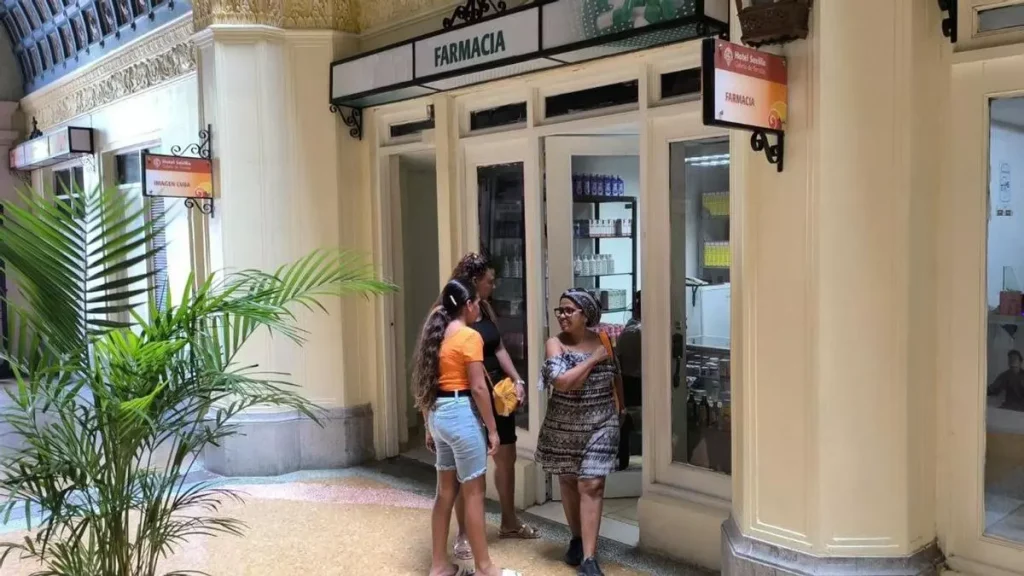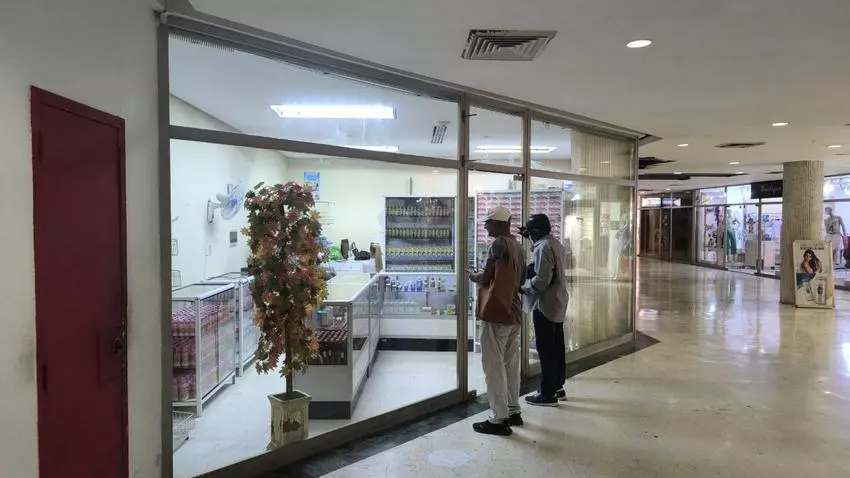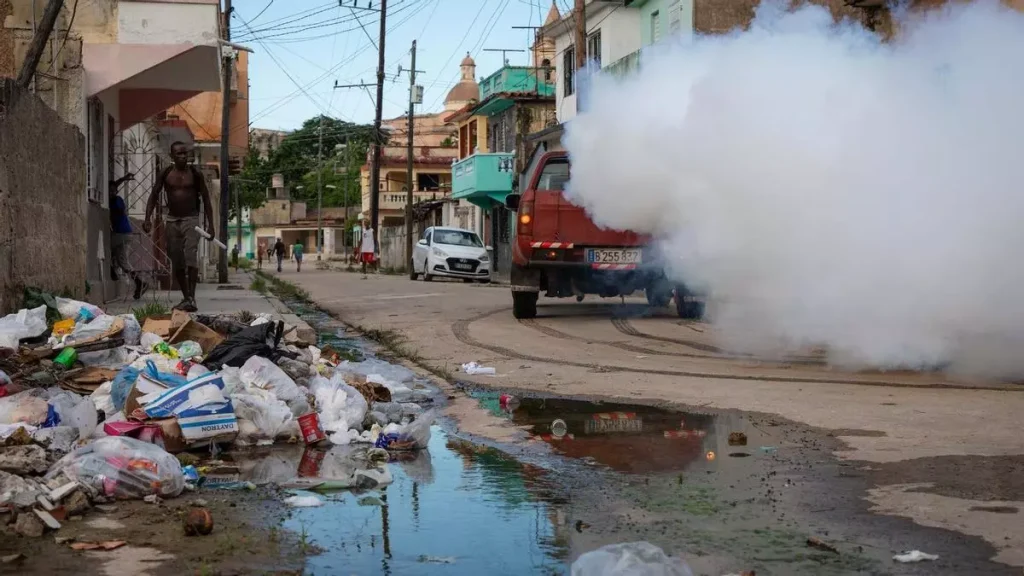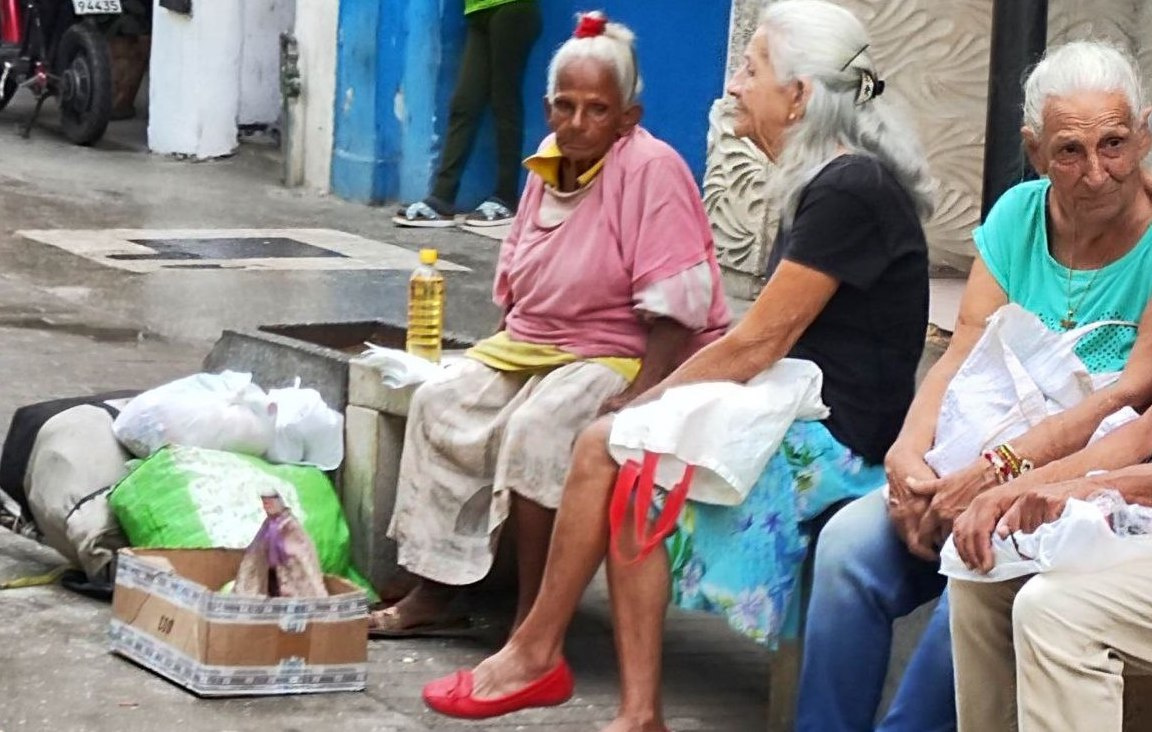In it, he makes “an appeal to the international community, to international and human rights organizations,” as well as to the United States Department of State, “to intervene with Cuban institutions for the constant violations of my rights and the denial of legal guarantees for my defense by Cuban state institutions and their representatives.”
Cuspinera says that he was manipulated by Cuban State Security (DSE) and the Cuban judicial apparatus, “which were cruelly activated against me” and which managed, with “multiple falsehoods,” to accuse me” without the right to a defense. “They have limited my access to justice. I was denied my rights to communication and legal defense from the start,” he claims in the letter. continue reading
Cuspinera announces he will go on a hunger strike on June 1
Therefore, he announces that he will go on a hunger strike -“to plantarme [stand firm]” he specifies, using the term of political prisoners – on June 1. “I will be willing to go to extreme consequences,” he says, until his rights to prompt defense and bail are guaranteed, “to be able to prove the injustice.” The Cuban-American businessman says that there was “premeditation by the DSE in conspiracy with the DTI [Technical Directorate of Investigations] and other institutions, including my defense attorney, who has worked against me.”
“Everything was planned even before my arrest, on June 20, 2024, almost a year ago,” he continues, confirming the date spread on social networks and never mentioned by the government. In those days, the La Tijera Facebook page said that a State Security operative arrived at the supermarket – located at kilometer 8 1⁄2 of the Carretera Monumenta, in the neighborhood of Berroa, more than 10 kilometers east of the center of the capital – along with two buses carrying auditors from Gaesa (Grupo de Administración Empresarial S.A.), the conglomerate of the Armed Forces and owner of the land where the establishment was located.
A day earlier, in the WhatsApp group managed by Diplomarket, a message announced that they were “closed until further notice,” explaining: “We are having problems operating because our commercial license has to be renewed.” The app could still be visited and had a caption: “We are offline. Send us an email.”
“The Frank Cuspinera and Diplomarket case was premeditated and planned because it developed the private sector and was registered as a company in the United States”
The La Tijera post pondered, referring to Raúl Guillermo Rodríguez Castro, son of the late Luis Alberto Rodríguez López-Calleja and Déborah Castro Espín, and bodyguard of his grandfather, Raúl: “It seems that now El Cangrejo [The Crab, a nickname for López-Calleja], grandson of the dictator Raúl Castro, no longer needs his Miami figurehead Frank Cuspinera Medina.” The brief text also recalled that Cuspinera Medina was vice president of Las Americas TCC Corporation, based in Pompano Beach (Florida), and that for years he had been residing in El Vedado, where he had bought “a mansion thanks to his relationship with the dictatorial elite.”
The next day, La Tijera disclosed more details of the case from an email received. According to this anonymous source, the “Cuban military forces” intervened in the business of the Cuban-American, and both he and his wife have been “incommunicado” since that day, accused of “tax evasion, currency trafficking and money laundering.” These accusations, the email claimed, were “nothing more than a pretext for the regime to appropriate their assets.”
“The authorities waited until the closing of the day to break into the company and take everything, a sale that the owners had previously authorized themselves,” continued the text. On the day after these events, “they began to confiscate all the assets of his company and distribute them among the members of the Castro elite.”
La Tijera’s source framed the operation within a “repetitive pattern” in which “the Castro regime attacks those who try to create opportunities and prosperity outside of State control.” However, this was not the case of Cuspinera, well established on both sides of the straits of Florida for years.
In his letter from prison, Cuspinera does not mention any of these names, but he states: “The Frank Cuspinera and Diplomarket case was premeditated and planned because it developed the private sector, and as a company registered in the United States with approval and federal licenses that competed with Cuban State enterprises, it brought into question the reach of the blockade.” In this regard, he also does not specify what type of license he has from the US Office of Foreign Assets Control (OFAC), without which it is impossible to trade with Cuba under the laws of the embargo.
Las Americas TCC, among other activities, was in charge of supplying Diplomarket, inaugurated at the end of 2022
Las Américas TCC, among other activities, was responsible for supplying Diplomarket, inaugurated at the end of 2022. The supermarket, which before opening was already functioning physically for online shopping, started operating discreetly until a tweet by CNN correspondent Patrick Oppmann, who did not mention its name, focused on it almost a year later.
On that occasion, this newspaper visited the business and could see the strong surveillance to which it was subjected. In a first booth, they were taking the data of vehicles at the time of entry, and later there was another guard booth, before entering the store. At the door, two individuals looked everyone up and down, and a large screen showed the movement of the security cameras, placed everywhere. A regular customer called it a “military unit.”
Not even 12 months had passed when Cuspinera fell into disgrace, in a case that recalled the former Minister of Economy Alejandro Gil Fernández, arrested in March 2024, weeks after being dismissed for “mistakes made in the exercise of his office,” and about whom nothing has been known since.
When Diplomarket came to light it was not easy to find out who owned it, as the firm was not on the list of micro, small and medium-sized enterprises (MSMEs) approved by the Ministry of Economy and Planning, and the name of Cuspinera did not appear on the supermarket’s website.
“Of the crimes they charge me with, they have manipulated contradictory statements of workers, without their knowledge and contact”
On the other hand, he was listed as vice president of Las Americas TCC. Consulting specialized pages, this newspaper verified that he had been domiciled in the United States and in El Vedado (Havana). In 2021 he appeared as a “specialist” at a meeting between self-employed workers and the National Association of Economists and Accountants of Cuba.
That same year, his name also appeared in a letter sent by several Cuban entrepreneurs to US President Joe Biden asking him to lift the sanctions against the island’s government, which were damaging to their businesses. In the letter he was not listed as a member of Las Américas TCC but rather as part of Iderod Servicios Constructivos.
This last firm was not on the list of MSMEs of the regime, although a company with its name, Cuspinera SURL LVI, is listed as dedicated to “providing services of electronic commerce platform,” as a branch of Las Americas TCC.
The businessman does not name in his letter either Las Americas or Iderod but does present himself as a “citizen, lawyer, Cuban-American entrepreneur” of Cuspinera SURL [Unipersonal Limited Liability Company], both in Florida and in Havana, “under the Diplomarket brand, known as the Cuban Costco.”
Cuspinera also states that he will not try to “evade the action of justice, but only ask that I can defend myself”
The text does not detail the charges against Cuspinera, but he claims: “Of the crimes I am accused of, they have manipulated contradictory statements of workers, outside their knowledge and contact.” The employer claims that he was accused of crimes by workers who “may have been able to leave the country.”
He says that, among other vicissitudes, “they have confiscated millions of dollars in goods, equipment, money from purchases and bank accounts,” without giving him a copy of those seizures. And he claims that the authorities “do not show evidence of alleged fraudulent goods, evasions or amounts, misrepresenting and manipulating information” which, he says, would prove his innocence. In addition, he accuses the prosecutors: “They have taken my statements by deception, trickery and torture.”
“They have denied all possibility based on an absurd social injury, without proof (there is no such danger from me to society), and by manipulating my statements and those of my employees.”
The appeal by his defense attorney to Court Complaints and Petitions was “riddled with errors, lacking in available evidence and all with the purpose of keeping me in prison, defenseless. He did not allow me access to my file and prevented other defense attorneys from being able to act.”
Giving names, he points to “instructor Yisset Oliva Betancourt,” the provincial director of the National Office of Tax Administration (ONAT), Yoandra Cruz Dovales, and his official lawyer, Luis Alberto Martínez Suárez, for having “taken unlawful actions to hold me in provisional detention unlawfully, without defense.”
Cuspinera also states that he will not try to “evade the action of justice but ask that I can defend myself through a bond so that the truth about my responsibility and that of the institutions comes out.”
Before finishing his letter, in which he also says that his mother is ill with cancer, the entrepreneur reaffirms his intention to stand firm. “I am ready to go to extreme consequences with my hunger strike to prove my innocence,” he concludes, after having warned that “the organs of the DSE” cut off “any possibility of defense.”
Translated by Regina Anavy
____________
COLLABORATE WITH OUR WORK: The 14ymedio team is committed to practicing serious journalism that reflects Cuba’s reality in all its depth. Thank you for joining us on this long journey. We invite you to continue supporting us by becoming a member of 14ymedio now. Together we can continue transforming journalism in Cuba.

![]() 14ymedio, Olea Gallardo, Havana, October 9, 2025 — “Payment in dollars, starting October 1st.” This information surprised the few customers of the Sevilla Hotel pharmacy on Tuesday, the employees heard. Until just a few days ago, it was an establishment where payments could be made in freely convertible currency (MLC), but now only fula [US dollars], foreign credit cards, or the Classic prepaid card are allowed.
14ymedio, Olea Gallardo, Havana, October 9, 2025 — “Payment in dollars, starting October 1st.” This information surprised the few customers of the Sevilla Hotel pharmacy on Tuesday, the employees heard. Until just a few days ago, it was an establishment where payments could be made in freely convertible currency (MLC), but now only fula [US dollars], foreign credit cards, or the Classic prepaid card are allowed.







































